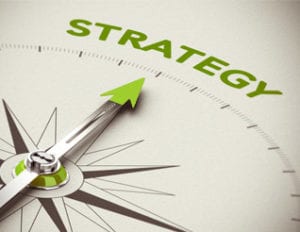 For Starting Your Own Inbound Marketing Strategy (Part 1), go here.
For Starting Your Own Inbound Marketing Strategy (Part 1), go here.
The marketing funnel breaks down into three parts: the top, the middle and the bottom.
- Top-of-funnel (Problem): leads at the top of funnel are typically searching for general information.
- Middle-of-funnel (Solution): leads in the middle of funnel need to discover your brand and the solutions you solve.
- Bottom-of-funnel Purchase (Decision): leads at the bottom of funnel are most often looking for information on the benefits of your product/service.
Define Your Content Strategy
When coming up with a strategy for your content calendar, creating different types of content that appeals to different stages of the buyer’s journey (listed above) will make or break your results.
Leads at the top need content to attract and inform them about their problem Next, they’ll need information that converts and educates them on potential solutions. Finally, they need to learn why your solution is better than everyone else’s.
Understanding the questions and concerns that each of your buyer personas have throughout the three stages of the inbound funnel will help your attract, convert and close qualified leads.
Design a Conversion Process
No two leads are quite alike. Some will reach a purchasing decision much quicker than others. Some might string you along, and then, they are never heard from again.
Each lead has a variety of factors that make the opportunity unique: challenges, questions, goals, and timelines for purchasing with budgets. But the primary reason a lead doesn’t advance down through the marketing funnel is unanswered questions. Is there something you haven’t addressed that may attract attention?
Where the lead is at in the conversion process combined (visitor vs. lead vs. qualified lead) with the buyer’s journey (problems, solutions and decisions) determines what type of questions they may have. And the best way to address them is through automated emails called workflows.
Automated emails give leads the valuable content they need, and they bring it right to the lead’s doorstep. The emails sent to leads at the top of the funnel should answer the most common questions that arise during the marketing and sales process. And as leads progress, your company can start educating leads on your solutions and brand.
Once a lead reaches the bottom, it’s time to transfer them to the sales department!
Create a Conversion-Focused Blog
Conversion-focused blogs have two goals: attract highly relevant traffic and convert that traffic into qualified leads.
For all your exclusive content (eBooks, whitepapers, and webinars), you should write a series of closely related blog posts that will help attract traffic and lead visitors to the content offer. If you had an eBook on “The 10 Benefits of a Website Redesign” your blog posts might include:
- Does Your Website Have Killer Traffic?
- 4 Trends Leading Website Design
- 5 Things You Need To Know About Every Website Redesign
And at the bottom of each of these blog posts, you should feature a CTA (call-to-action) that leads from the blog post straight to a landing page that presents the exclusive content offer (in the case the 10 benefits eBook).
Implement an Inbound Marketing Platform
While the majority of an Inbound Marketing plan comes from the people and the strategy behind it. The technology that facilitates marketing automation, content creation and lead conversion is also important. It’s just not as important.
When considering inbound platforms to build a lead nurturing infrastructure, consider platforms and approaches that let you focus on your business over connecting different technology systems.
 Get the Experts
Get the Experts
Through Part 1 and Part 2, we’ve covered what it takes to get an inbound strategy off the ground. And if you’ve stuck around till this point, you probably have a good window into just how much work it will take to be successful.
In addition, being good at inbound marketing is a full-time job that requires being proficient in a diverse range of skills. Depending on your in-house expertise, capacity for additional work, and budget – it might make sense to hire for specific roles or to outsource certain aspects of your inbound marketing execution.
A well-rounded marketing team needs to cover all these sets of skills:
- Content creation and copywriting
- Inbound strategy and planning
- Web design and analytics
- Web development
- Search engine optimization
- Pay-per-click advertising
- Conversion optimization
- Email automation marketing
- Social media and community building
- Project management
Conclusion
Making the switch from outbound focus tactics to inbound dominated investments can seem like an impossible leap of faith. But the benefits are proven. The sooner you can define and implement your strategy, the sooner the benefits will arrive: qualified leads at a low cost and with scalable strategy.
Steps In Review:
- Define buyer personas
- Identify keywords
- Set SMART goals
- Define content strategy
- Create conversion process
- Create conversion blog
- Implement technology
- Recruit skillsets
